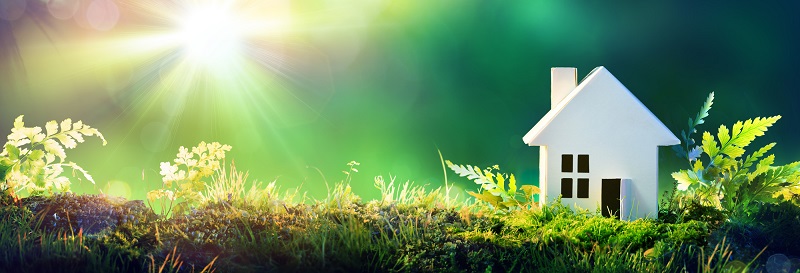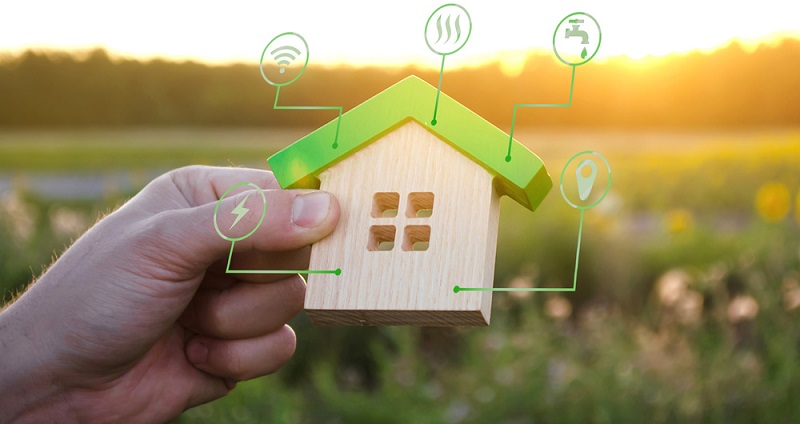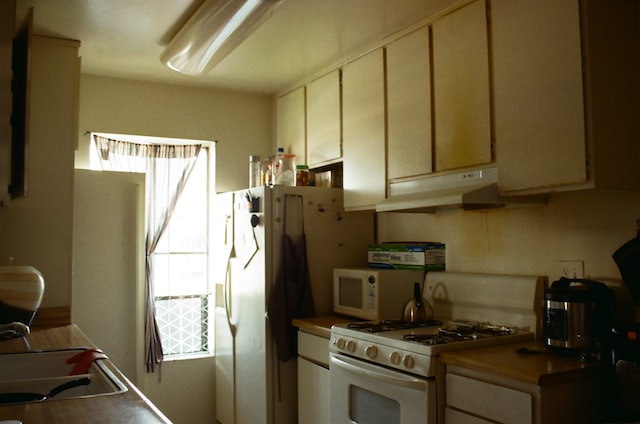
With today’s climate change issues, people are paying more attention to their carbon footprint and, overall, trying their best to be environmentally conscious. Due to this, eco-friendly housing is becoming popular.
An eco-friendly house is designed with recycled materials, renewable energy sources, and sustainable landscapes. When constructed properly, it can help lessen pollution and allow you to enjoy savings on water and energy usage, and it can increase the value of your home.
To help you get started, here are some valuable tips to make your home eco-friendly:
- Use Solar Energy
One of the ways to build an eco-friendly house is to use solar energy. It’s a renewable and clean energy source, and it has positive long-term financial implications. In other words, it’s a wise investment. If you’re curious about how much you need to spend or how much you can save, here is an example: Oregon solar cost breakdown.
To gather and store solar energy, you need to install solar panels, which convert sunlight into energy that creates a source of electricity. At present, there are different types of solar panels. If you don’t know which type is suitable for your property, working with professional solar panel installers can help you make the right choice.
- Choose Sustainable Building Materials And House Décor
To build an eco-friendly property, you should choose sustainable materials as much as possible, such as recycled plastic, reclaimed lumber, natural products, and recycled glass. Then embellish the space with eco-friendly décor. Better yet, instead of buying brand-new furniture, opt for secondhand pieces that you can easily refurbish such as tables with faulty table legs or cabinets that need repainting. Not only will this help reduce your carbon footprint, but you’ll end up saving some money, too.
The advantages of using sustainable materials and décor go beyond protecting nature. Primarily, using them reduces your exposure to harmful toxins.
Most conventional building materials contain harmful toxins. For example, polyvinyl chloride (PVC) is used for making sewage and water pipes, window frames, gutters, and insulation for electrical cables. Formaldehyde is another chemical often found in most construction materials. It’s typically present in adhesive paints and materials or pressed wood products. Both PVC and formaldehyde may cause respiratory and skin irritations.
With green materials and décor, you can improve your home’s air quality, natural light, and temperature. These conditions, in turn, can boost your health and well-being.
- Buy Energy-Saving Appliances
When it comes to appliances, consider purchasing energy-saving units. As the name suggests, they use a small amount of energy to complete a task. Since they use less electricity, they can reduce emissions and reduce wasted energy. Most of these appliances can even run under low energy and temperature settings, which helps to sustain their functionality until the tasks are done.
Some of the energy-efficient appliances you can consider are as follows:
- Dryers
- Washing machines
- Dishwashers
- Lighters
- Water heaters
- Air-conditioning units
- Refrigerators
When shopping around for energy-efficient appliances, here are the things to consider:
- Check The Energy Star Label: Appliances with Energy Star labels are considered energy-efficient. The Energy Star label is a government-backed trademark symbol, specifically established by the Environmental Protection Agency (EPA). It helps consumers know more about the product’s environmental impact and allow them to make well-informed decisions when purchasing appliances.
- Compare The Costs: Although it’s tempting to opt for the cheapest appliance available, comparing the costs is crucial. Energy-efficient appliances are often expensive, but they can lead to significant savings over time since they consume less energy.
- Opt For The Right Size: Your appliance’s size matters. Units too big for your home may consume more energy to operate. On the contrary, too-small appliances may have to be used for an extended period, making them inefficient. So, when shopping for energy-efficient units, choose the right size for your space to avoid wasting energy.
Aside from the above considerations, it may be handy to check for tax rebates and credits. Most states provide tax credits and incentives for those who purchase certain energy-efficient appliances.

- Use Energy-Efficient Light Bulbs
Another way to build a more sustainable home is to use eco-friendly lightbulbs. Unlike traditional light bulbs, they last longer and use lesser electricity to emit the same amount of light.
The common energy-efficient light bulbs are compact fluorescent lamps (CFLs) and light-emitting diodes (LEDs). While these bulbs are often expensive, they will be worth the switch from traditional light bulbs.
There are various factors to consider when choosing energy-efficient light bulbs, such as the following:
- Lumen Value: Back then, people often looked at the wattage value to know about the power needed and brightness produced by a light bulb. Wattage used to be directly proportional to brightness. With the invention of energy-saving light bulbs, people started looking at the lumen value instead. Energy-efficient lights use lesser wattage compared to regular lights for any given amount of illumination. So when buying, check the lumen value, instead of the wattage,to know how much brightness the bulb can produce.
- Type: There are various types of energy-saving light bulbs. Choose according to where and how you want to use them. For example, if you want a light bulb for outdoor lighting, you can use CFL lights. Crystal chandeliers and spotlights use LEDs, while dimmable lights may use either B-rated or halogen (LED) light bulbs.
- Color: If you want natural light, choose light bulbs that are warm or soft white. For areas that need more light than usual, try using pure or cool white energy-efficient light bulbs.
When choosing light bulb designs, you can always ask for the opinion of a professional interior designer. Also, when it comes to installation, it’s best to reach out to a professional installer. Being experts, they are apt to have excellent suggestions about eco-friendly lighting.
- Invest In Landscaping
Landscaping is vital in making your home eco-friendly.
When designed wisely, landscaping can help minimize energy consumption. A healthy lawn can help block the amount of sunlight that falls directly on the walls or windows of your home. The shade of plants and trees around your property will significantly lessen the temperature in your house. You will need a good and proper landscaping design to be able to lower your energy bills and reduce your dependence on cooling and heating systems.
A well-designed lawn can also prevent soil erosion and water runoff. Moreover, when considered during the design stage, water use and maintenance won’t impose too much on your bills.
Here are some landscaping ideas you may consider when building an eco-friendly home:
- Take Advantage Of Organic Mulch
Bark, pine needles, wood chips, leaves, and other organic mulch offer various benefits. Mulch retains moisture and regulates soil temperature. These conditions help keep plants healthy and alive. Mulching also hinders weed growth, making weeding much easier.
As organic mulch breaks down, it adds more nutrients to the soil. Therefore, mulching under the trees to the drip line doesn’t only help retain the moisture but also lessens your lawn’s carbon footprint.
- Select Low-Water Native Plants
When it comes to trees and plants suitable for your home, select the flora native to your area. The native plants and trees attract butterflies, birds, and other local wildlife.
The good thing about native plants is that they need little maintenance because they’re naturally resistant to local diseases and pests. Since they don’t require pesticides, supplemental watering, or fertilizers, they’re inexpensive, easy to maintain, and eco-friendly.
Also, check for low-water plants, such as echeveria, thyme, and California wild lilac. They are not only low-maintenance but also visually striking.
- Don’t Plant Grass
Instead of planting grass, consider ground covers for your lawn. Ground covers are advantageous because they hug the ground and require little mowing. You don’t even need to use herbicides or additional watering.
Clover is the best ground cover for lawns. It stays green and sweet smelling, feels cushiony and soft underfoot, and helps avoid soil compaction. Moreover, creeping perennials can be used for ground cover lawns. They smell lovely, feel soft underfoot, and require little maintenance.
There are other landscaping ideas you may implement. However, for best results, it’s wise to work with the best landscaping experts in your area to know which plants, trees, and designs are ideal for your needs.
- Install A Cool Roof
Unlike the typical roof, a cool roof is made to reflect sunlight while absorbing less heat. It has a high solar reflectance, which means it can reflect the sunlight and save more energy.
Originally, cool roofs were available in white and other lighter shade colors. But these days, homeowners can choose from several options available in dark hues. Cool roofs may also improve your roof’s durability and lessen the heat effect.
A cool roof can also improve comfort and health by minimizing the air temperatures in the housewith or without air conditioners. Thus, it can help prevent heat-related deaths and illnesses.
Since cool roofs can lessen energy use, they can help minimize air pollution and greenhouse gas emissions, which can harm the environment. Therefore, agreen roof is an excellent choice when building an eco-friendly home.
Conclusion
Building an eco-friendly house may seem complicated and expensive, but it doesn’t have to be. Nowadays, it can be easy to construct a homethat’s sustainable and produces less carbon footprint without breaking the bank. All you need is to explore the options and never hesitate to work with professionals to build the green home of your dreams.



